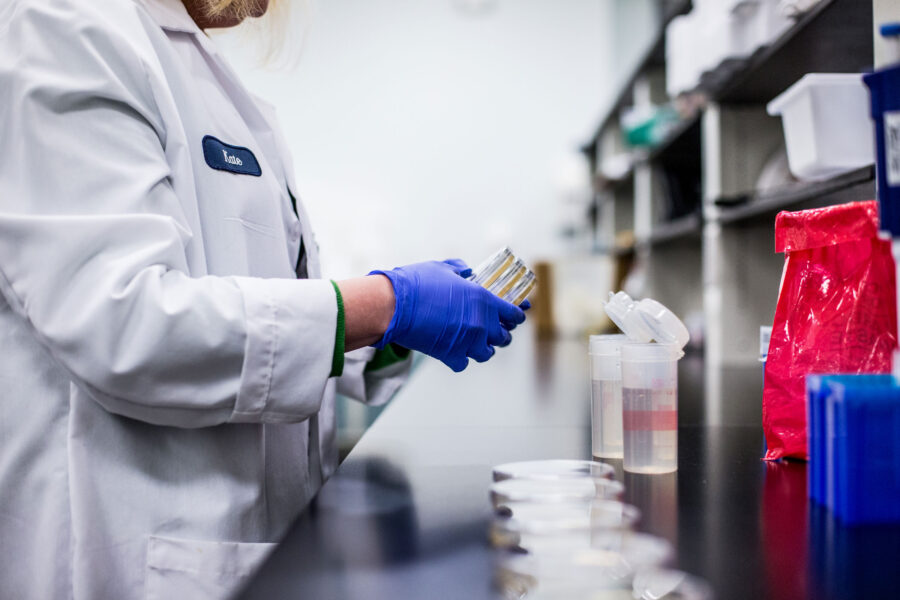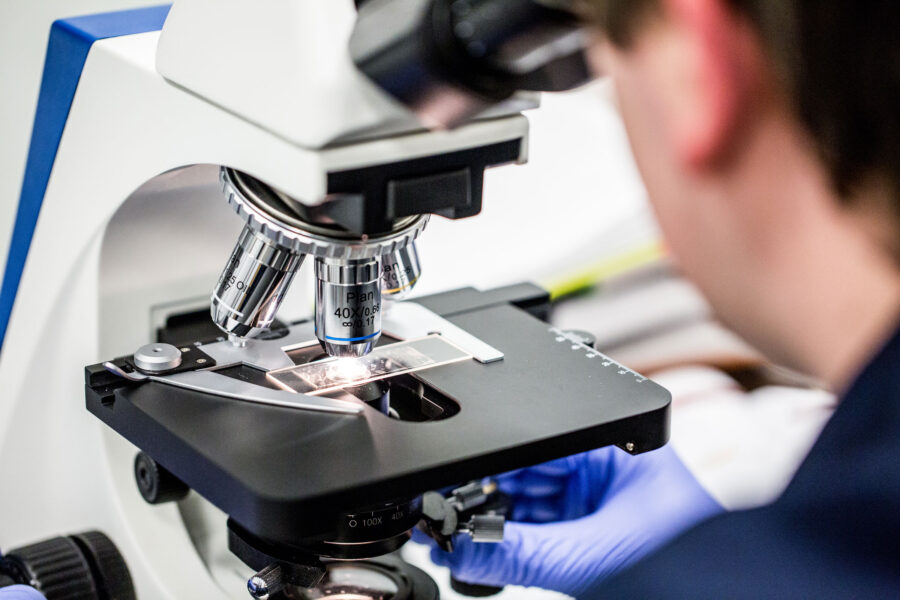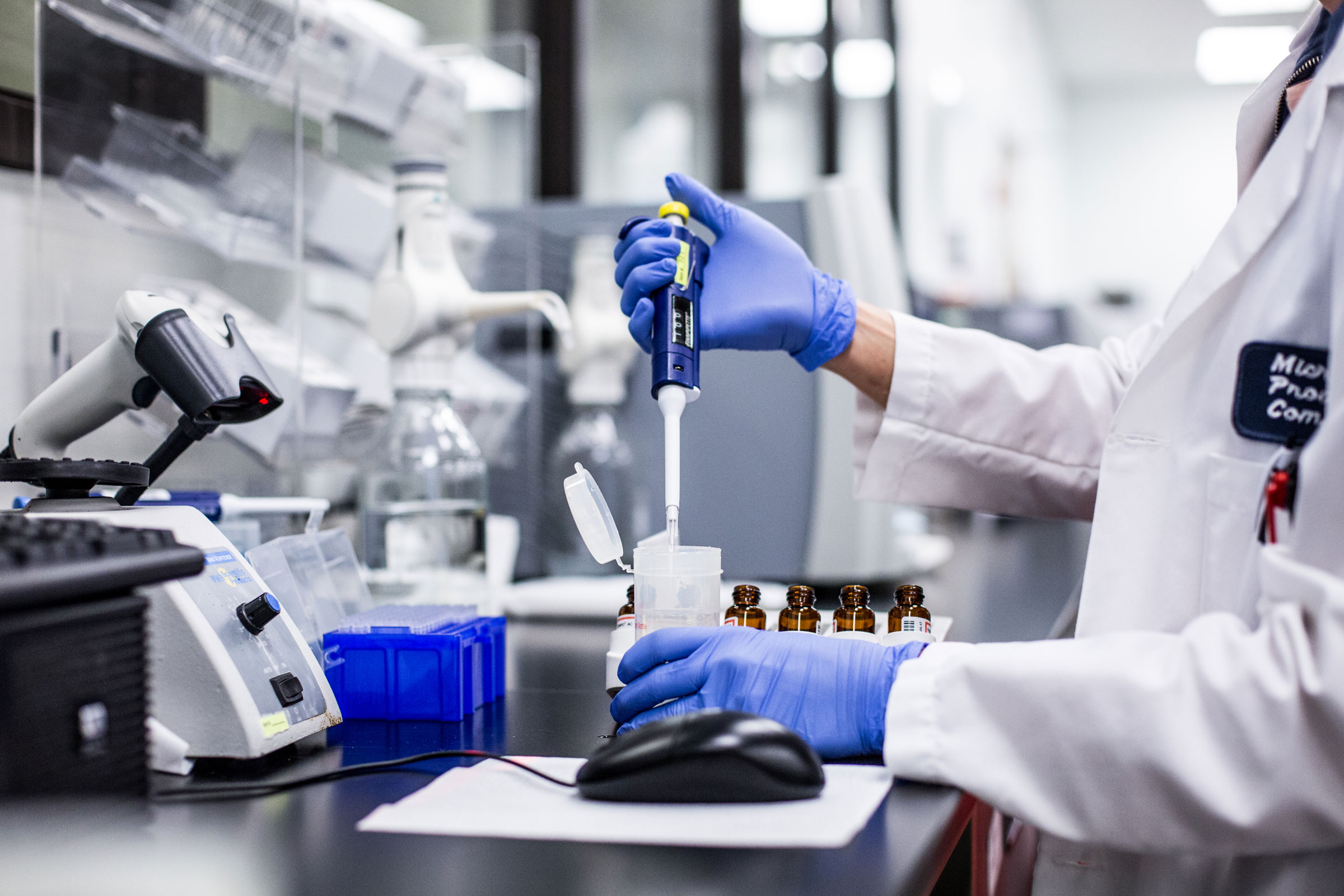Story at a glance:
- Health care facilities are increasingly looking for ways to further their sustainability mission.
- Microban technologies address both product cleanliness and sustainability concerns for health care environments, delivering a dual benefit.
The first two decades of the 21st century have presented the world’s health care industry with two catastrophes: a global pandemic that pushed care systems to the point of collapse and ever-worsening global climate change that is causing natural disasters, threatening communities, and making everything more difficult.
Considering it’s an industry built on responding to emergencies, it should come as no surprise that the health care sector is finding new ways to respond to these challenges—right down to how their hospitals and clinics are built and maintained. Part of that effort includes using materials that are both environmentally friendly and help keep facilities cleaner.
Redefining “Clean”
“Clean” is top of mind now more than ever post-pandemic, but what does it mean to be clean, exactly? And just what does this need to look like?
Incorporating antimicrobial additives into clinical surfaces at the point of manufacture is an integral part of ongoing plans to enhance product cleanliness in health care environments. The health care sector was expected to experience the fastest annual growth rate of all the industries relying on antimicrobial technologies between 2022 and 2030, according to a report by Grand View Research. Leaders in the industry say efforts must be made to keep up with growing demands.
Enter Microban International—home to two of the most trusted and well-known global brands in the antimicrobial, odor control, and continuously active disinfection and sanitization markets. Their proactive solutions keep products cleaner by preventing microbial problems before they start. For more than 40 years Microban has been innovating to produce technologies that enhance medical products and more all over the globe.
Our technologies keep treated surfaces cleaner between cleanings and are a complement to good hygiene practices.
Microban® technologies are especially useful in health care settings. “Our technologies keep treated surfaces cleaner between cleanings and are a complement to good hygiene practices,” says Michael Ruby, president at Microban.
While disinfectants wipe out bacteria on surfaces, they are only a temporary solution. It takes just moments for bacteria to begin propagating on an untreated surface after cleaning. “You start over. That untreated surface starts to bloom again,” Ruby says.
Microban technologies work 24/7 to cap the number of microbes that grow on a surface. Treated surfaces aren’t sterile, but microbe populations can be kept in the hundreds rather than the millions. This not only supports regular cleaning and disinfection routines but also extends the longevity of products and surfaces. These solutions can be engineered into practically any product or surface during manufacture to deliver permanent product protection against degrading microbial growth—including a broad-spectrum of bacteria and fungi.
It’s solutions like these that lead to cleaner health care environments and more positive patient experiences. Ruby says Microban antimicrobial technologies should be considered for all high-touch, high-traffic, and cleanliness-critical areas in health care spaces. “By keeping products and surfaces cleaner, built-in antimicrobial solutions deliver added peace of mind for health care workers and patients. These technologies should also be considered for products that can replace single-use items and those that are harder to keep clean.”
Sustainable Solutions

Photo courtesy of Microban
Microban offers a wide range of antimicrobial technologies based on more sustainable active ingredients. These solutions are favored by architects, specifiers, builders, and building occupants who are seeking more durable and longer-lasting supplies. Their technologies can benefit many spaces across health care facilities, especially with solutions like Ascera™, MicroGuard™, and LapisShield™—all on exhibit at this year’s Greenbuild International Conference and Expo.
Ascera is an antimicrobial technology inspired by nature that offers continuous product protection against bacterial growth for olefinic polymers and solvent-based coatings. (The Microban technology used in Ascera is similar to acids found in nature and is used in multiple consumer product applications. Ascera technologies are currently only available for sale in the United States and Asia.)
MicroGuard is a line of metal-free antifungal additives for PVC, PU, and EVA applications, offering an effective alternative to arsenic-based formulations.
LapisShield is a heavy metal-free solution that offers improved quality, stability, and antimicrobial product protection for water-based coatings.
These novel formulations not only deliver lifelong product protection to a wide range of building materials, extending their functional life, they also inherently reduce end-of-life waste generation—another key factor in many health care facilities’ sustainability goals.
Key Benefits
1. Extended Lifespan of Materials
Products featuring Microban’s antimicrobial technology can resist deterioration and degradation caused by microbial growth for the entire life of the product. This prolongs the lifespan of materials and reduces the frequency of replacements or renovations in health care facilities. Fewer replacements mean less waste generation, reduced water and energy consumption, and greater cost savings.
Longer lifespan, of course, also means less materials end up in the landfill. Of the 14,000 tons of waste generated daily in US health care facilities, about 20 to 25% is plastic. More than 90% of plastics, including those used in health care, are not recycled and either reside in landfills or infiltrate natural environments. “When we extend the life of a product we are reducing landfill loading. We’re reducing the need for repurchase and replacement,” Ruby says.
Microban’s solutions promote a circular economy, and design teams will find a wide variety of products available with antimicrobial product protection—including treated concrete; flooring options like carpeting, ceramic tile and grout, vinyl tile and laminate; paints and coatings; and powder-coated door and furniture hardware.
Microban technologies show up in many hospital plastic goods as well, including everything from bedpans and key card holders to keyboards, privacy curtains, and the crash carts used during emergency codes.
The materials require no special handling or extra steps during installation—other than what Ruby calls the most important step. “Look for the Microban Trustmark (on the product or on the packaging).”
2. Decreased Chemical Disinfectant Use
Traditional cleaning and disinfection methods in health care facilities often involve the use of harsh chemical agents. Built-in antimicrobials can supplement these efforts, reducing the frequency and amount of chemical disinfectants needed.
A decrease in the use of chemical disinfectants can lower the release of potentially harmful chemicals into the environment and reduce the carbon footprint associated with their production and transportation.
3. Less Water
Use Surfaces with built-in antimicrobials are often easier to keep clean and maintain because of the inherent resistance to microbial growth. In addition to fewer cleaning supplies needed, this can mean less water is needed for upkeep. Streamlining maintenance practices contributes to resource conservation and cost savings over time.
Microban treatments can also lengthen the life of soft goods like furniture covers, scrubs, sheets, pillows, and footwear. “When you can use those in an environment for a longer time it reduces not only the need to replace them; it also reduces the need to launder them as often,” Ruby says.
And by washing the items less frequently, health care facilities can use fewer harmful detergents, minimize water and energy consumption, and reduce the release of microfibers into the environment.
4. Improved Energy Efficiency
The integration of antimicrobial technology can lead to more efficient systems in health care facilities—including HVAC systems and insulation.
By controlling microbial growth on surfaces these systems may require less energy to operate optimally.
Improved energy efficiency contributes to reduced greenhouse gas emissions, further aligning with many facilities’ sustainability objectives.
5. Durability
Embedded antimicrobials are added to the products at the point of manufacture and become a permanent part of the products. These built-in technologies can offer continuous microbial reduction on a material for the life of the treated product. They also operate a multi-modal attack, making it harder for microbes to become resistant to their effects.
And because Microban technologies are incorporated into the treated product, “The functionality is indelible. It will perform 24/7 for the lifetime of product use,” Ruby says.
Proactive Products

The same technology that prevents surfaces from carrying large loads of microbes also reduces microbial degradation of those surfaces. That means materials will require less maintenance and last longer, reducing the need to replace them. Photo courtesy of Microban
Microban stays focused on innovating and is now working to launch a new range of even more environmentally friendly technologies. Many traditional antimicrobial agents employ the use of heavy metals to deliver functionality. Microban is now developing alternative formulations to meet the ever-evolving needs of brands, manufacturers, and product innovators worldwide.
“We are proud to have developed a series of new technologies that represent the culmination of many years of intensive research,” Ruby says. “These are the first of an exciting series of nature-inspired solutions that address the need for sustainable product protection in different market segments, including health care.”
MicroGuard, mentioned earlier, is a key example. This technology provides high antifungal efficacy for building materials, preventing microbial degradation to extend the useful product lifetime. MicroGuard was developed as a non-leaching antifungal agent with active ingredients that are metal-free, offering an alternative to arsenic-based OBPA—a common antifungal additive—that is causing regulatory concerns.
As the company continues to find new ways to incorporate its technologies into products, Ruby wants to hear more from health care providers about what else might be beneficial. “Microban wants to be part of the system of care that delivers a cleaner, greener planet for all,” he says.


